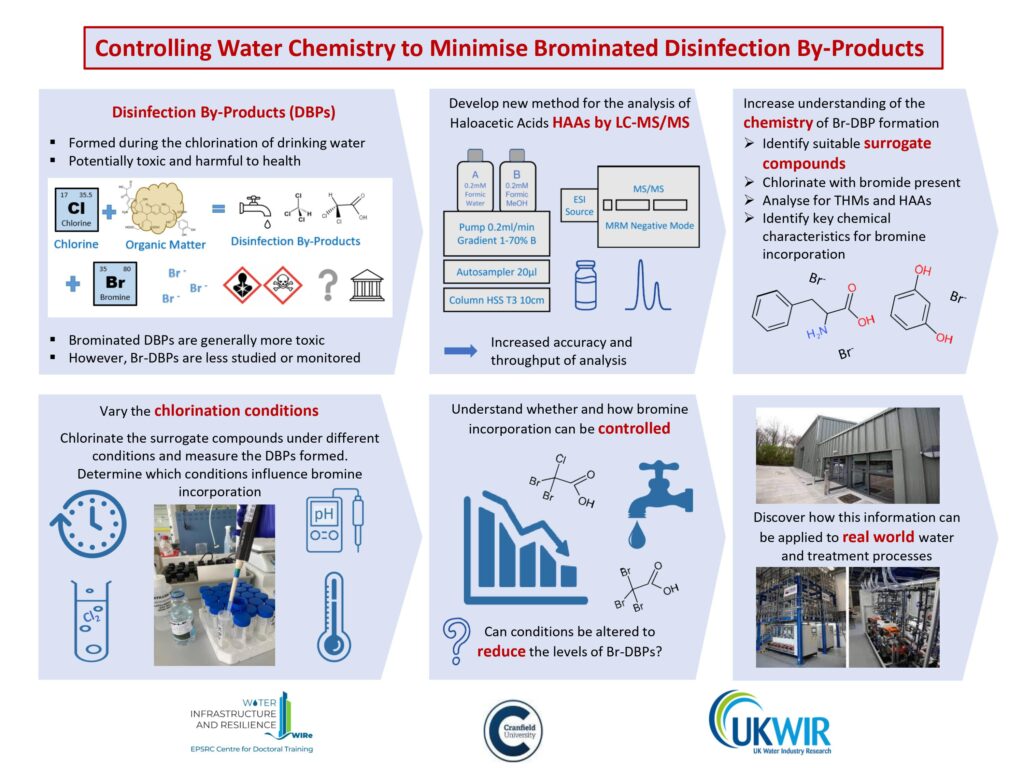Meet Polly Grundy
Email: [email protected]
Academic and Industrial affiliations: Cranfield University, UKWIR
Title of research project: Controlling water chemistry to improve drinking water quality and minimise disinfection by-products – brominated DBPs

Disinfection by-products (DBPs) are unwanted compounds formed during the disinfection of drinking water, predominantly from the interaction of organic matter and chlorine. The major classes of DBPs identified are Trihalomethanes (THMs) and Haloacetic Acids (HAAs), but over 600 different DBP compounds have been identified thus far. DBPs are of concern due to their potential toxicity, with some of them demonstrating geno- and cyto-toxicity and being epidemiologically linked to an increase in bladder cancer.
The focus of this research is brominated DBPs, which are formed when bromide is present in the water, for instance due to saltwater incursion or industrial activity. Brominated DBPs are of particular concern as they have greater toxicity than their chlorinated analogues, and prevalence studies have identified that they form at relatively high levels in some circumstances. However, the lack of regulation combined with the difficulties associated with analysis means that the extent, influences and mechanism of bromine incorporation during DBP formation have not been as fully investigated. This research project focuses on that knowledge gap.
The first stage of the project involves developing a simple and robust method for the analysis of chlorinated and brominated HAAs by Liquid Chromatography Mass Spectrometry (LC-MS/MS), which ensures suitable research data can be collected. The next step is to conduct laboratory studies on surrogate compounds by chlorinating them with bromide present and measuring the HAAs and THMs formed. The level of formation and extent of bromine incorporation into the DBPs will be analysed to identify the molecular functional groups and chlorination conditions which specifically increase Br-DBP formation. The later stages of the project will focus on applying the knowledge gained to understanding the real-world incorporation of bromine into DBPs during drinking water disinfection. It is intended that the increased understanding of the chemistry of Br-DBP formation can be used to develop potential treatment solutions, identify source waters at higher risk of increased toxicity, and consider how to minimise the risk posed by Br-DBPs in drinking water.

